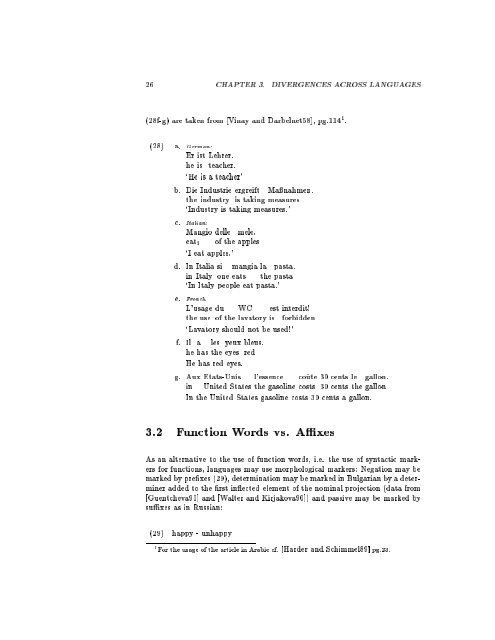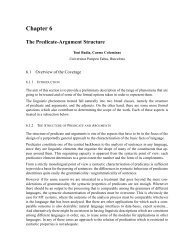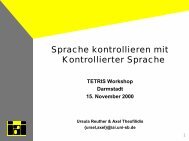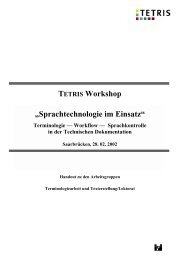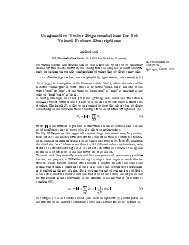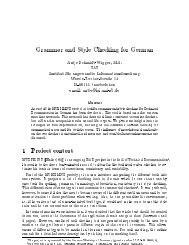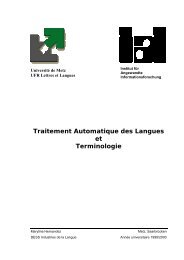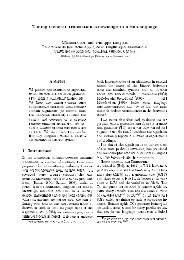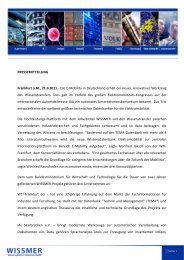Linguistic Modeling for Multilingual Machine Translation
Linguistic Modeling for Multilingual Machine Translation
Linguistic Modeling for Multilingual Machine Translation
Create successful ePaper yourself
Turn your PDF publications into a flip-book with our unique Google optimized e-Paper software.
26 CHAPTER 3. DIVERGENCES ACROSS LANGUAGES<br />
(28f-g) are taken from [Vinay and Darbelnet58], pg.114 1 .<br />
(28) a. German:<br />
Er ist Lehrer.<br />
he is teacher.<br />
`He is a teacher'<br />
b. Die Industrie ergreift Manahmen.<br />
the industry is taking measures<br />
`Industry is taking measures.'<br />
c. Italian:<br />
Mangio delle mele.<br />
eat 1 of the apples<br />
`I eat apples.'<br />
d. In Italia si mangia la pasta.<br />
in Italy one eats the pasta<br />
`In Italy people eat pasta.'<br />
e. French<br />
L'usage du WC est interdit!<br />
the use of the lavatory is <strong>for</strong>bidden<br />
`Lavatory should not be used!'<br />
f. Il a les yeux bleus.<br />
he has the eyes red<br />
He has red eyes.<br />
g. Aux Etats-Unis l'essence co^ute 30 cents le gallon.<br />
in United States the gasoline costs 30 cents the gallon<br />
In the United States gasoline costs 30 cents a gallon.<br />
3.2 Function Words vs. Axes<br />
As an alternative to the use of function words, i.e. the use of syntactic markers<br />
<strong>for</strong> functions, languages may use morphological markers: Negation may be<br />
marked by prexes (29), determination may be marked in Bulgarian by a determiner<br />
added to the rst inected element of the nominal projection (data from<br />
[Guentcheva90] and [Walter and Kirjakova90]) and passive maybemarked by<br />
suxes as in Russian:<br />
(29) happy - unhappy<br />
1 For the usage of the article in Arabic cf. [Harder and Schimmel89] pg.23.


